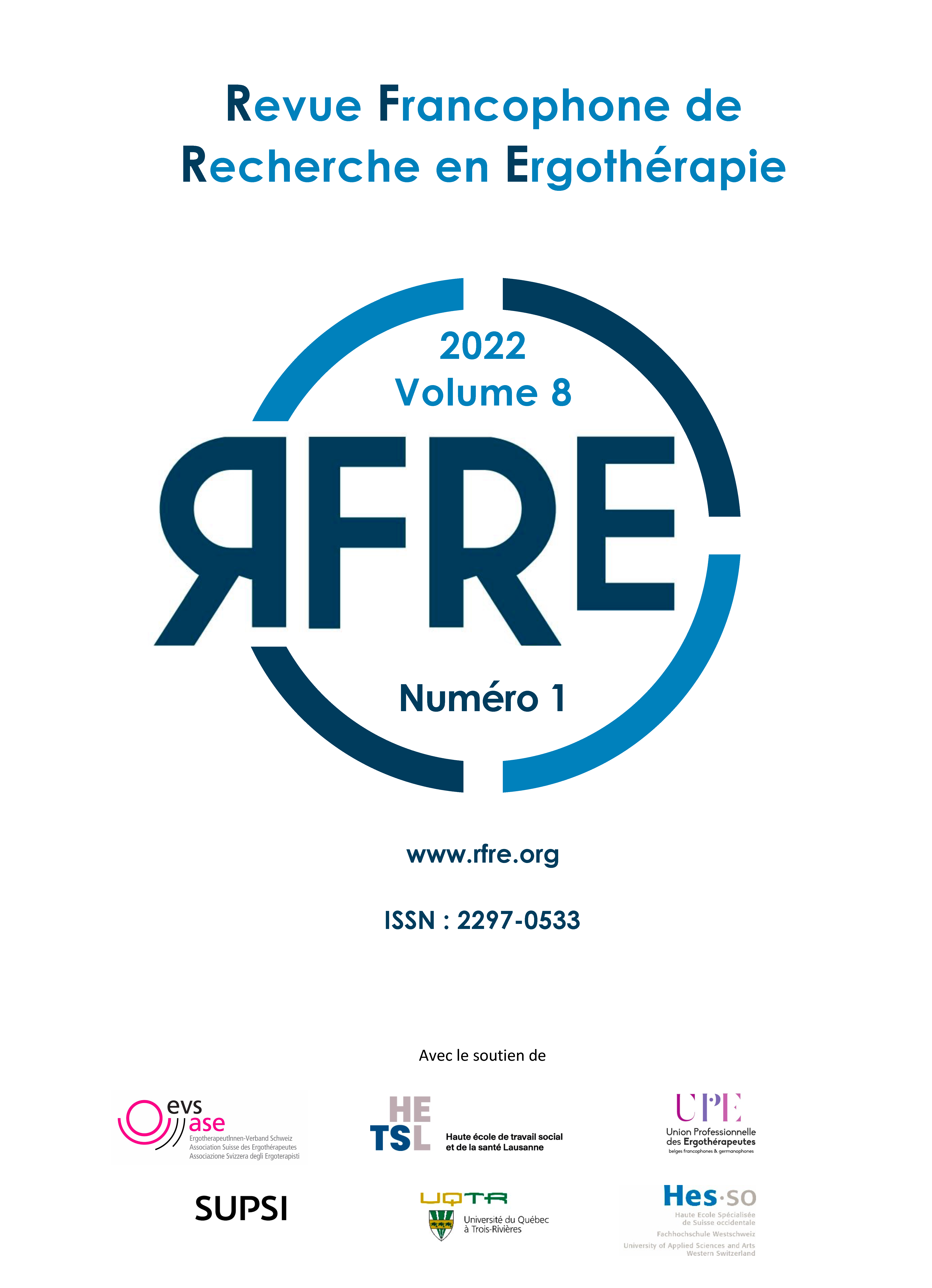Le sous- et sur-investissement de l’occupation, une porte ouverte vers la compréhension des troubles du comportement alimentaire : étude de portée
DOI:
https://doi.org/10.13096/rfre.v8n1.192Abstract
Introduction As with other mental health disorders, eating disorders (ED) are complex multifactorial problems that influence a person's daily functioning in interaction with various environment. A person with eating disorders can experience her occupational choices in interaction with bodily and eating preoccupations and the multiple contexts in which she lives. Objectives The objectives of this narrative review are, on the one hand, to develop an in-depth understanding of daily occupations in people with an ED and, on the other hand, to identify the individual and environmental characteristics that explain occupational choices. Method This narrative literature review integrates systematic selection and analysis techniques (Bearman & al., 2012). The adoption of a hierarchical approach to study selection in four phases, based on the PRISMA flow chart, is favoured. Results and discussion A total of 14 papers were included for analysis. Three main themes emerge from the data: a) the organization of time in ED; b) the categorization of dysfunctional occupations; and, c) the development of explanatory components of occupational choices. The results allow us to identify occupations that are OVER- and UNDER-invested by the person with ED Conclusion This narrative review demonstrates a limited body of scientific literature that conclusively examines the time use and daily life of people with ED. One scientific field is worth exploring: occupation in ED.
Downloads
Published
How to Cite
Issue
Section
License
Copyright (c) 2022 Marie-Josée St-Pierre, Pierre-Yves Therriault, Sandra Béliveau, Johana Monthuy-Blanc

This work is licensed under a Creative Commons Attribution-NonCommercial-ShareAlike 4.0 International License.












